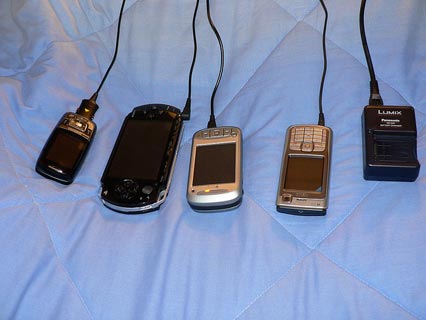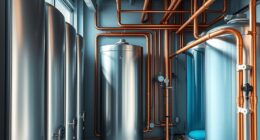Before you decide to install a whole house fan, it is crucial to have a clear understanding of its energy consumption. Here are some tips to help minimize the amount of energy used by the fan. It is important to note that these recommendations may not be suitable for everyone. They are intended to guide you in making informed decisions about whether a whole house fan is the right choice for you and your family.
Cost of running a whole house fan
The cost of running a whole house fan varies depending on the model. A one-speed model can cost as little as $600, while a variable-speed model may cost anywhere from $1,350 to $1,850. A two-speed model gives homeowners greater control over the airflow. The higher speeds, however, are generally louder.
The coolest time of day to use a whole-house fan is when the air is cooler than outside. This allows the cold air to circulate in your home for longer times. You can also turn it on at night when it is most quiet. The fan should also be switched on at least a couple of hours before bed.
The cost of running a whole house fan depends on the size of your house. A 36-inch model with 7,000 CFM can cost as much as $1,600. A 20-inch fan with a similar capacity can cost between $400 and $1,300. Electrical permits vary, but the cost can range from $10 to $500.
The installation of a whole house fan can be expensive, especially if you need to cut holes in your ceilings. To install the fan, you might need to hire a carpenter. You may also need to wire the fan, which can cost up to $300.
The cost of running a whole-house fan will depend on the size of your house and the number of rooms. Some models use a direct-drive motor while others use belt drive motors. The direct-drive versions cost more, but they are quieter. In addition, you can save money on your electric bill by running a whole-house fan in your home.
Installing a whole-house fan involves cutting the opening in the ceiling, framing support within the attic beams, mounting the fan and wiring it. A professional electrician can complete the job or you can do the installation yourself. It will cost you between $200 and $260 to do it yourself.
Whole house fans can last up to 20 years if properly maintained. They do need to be replaced occasionally. The life expectancy of a whole-house fan is dependent on how frequently it is used and how well it is maintained. Many models come with extended warranties of up to fifteen years.
Whole house fans can be expensive to install, so it’s essential to know the costs involved. A professional installation can cost from $300 to $1,000. It can take anywhere from four to eight hours to complete. Installing the fan, a dedicated circuit, and a wall switch can add a few hundred dollars to the overall cost.
The cost of running a whole house fan is relatively low compared to the cost of central air conditioning. The cost of running a whole house fan will be between one and five dollars an hour, which is much less than the cost of central air conditioning. The unit consumes around ten percent less electricity per hour than central air conditioning. If you live in a warm climate with lower humidity, a whole house fan can save you a lot of money and energy.
Energy efficiency of whole house fans
Whole-house fans can reduce your energy costs and improve the air quality in your home. The Environmental Protection Agency and the American Lung Association estimate that the concentration of pollutants inside our homes is between two and five times higher than what we find outdoors. They can also help reduce carbon monoxide levels, which can be drawn in through windows and doors.
Whole house fans can be a worthwhile investment if you live in a warm climate. This type of ventilation system is not suitable for every house. Make sure you research it before you purchase one. Also, make sure to check for tax incentives available in your area. You might be eligible for rebates from your local government to offset the cost of installing whole-house fans.
Another major benefit of whole house fans is that they are highly effective in cooling homes. They are installed in the ceiling or attic and help to remove hot air from the house and replace it by cooler air from outside. Typically, residents will turn the whole house fan on when the temperature outside drops below the temperature inside. To get the best benefit, they will want to leave the fan on for several hours or overnight.
Whole-house fans are less expensive to run than central air conditioning systems. On average, a typical whole house fan uses only about 10 to 15% of the power used by a central air conditioning system. You can expect to save several hundred dollars per month on your energy bills if you keep this in mind.
The amount of fresh air a whole house fan draws in is the best indicator of its efficiency. A 24-inch fan with a 1/3 horsepower motor can draw up to three hundred cubic yards per minute (cfm), of air against a water pressure drop of one-inch. When the fan is operating at a high speed, it can draw up to 2,060 cfm of air.
Whole house fans are often noisy. While some fans are quieter than others, they still make a lot of noise. Small ceiling mounted fans tend to be the noisiest. For this reason, you should consider a dual-speed or variable-speed WHF for a quieter home. This will allow you to control the fan speed and reduce the noise level while keeping the energy usage low.
Cooling a house with whole house fans is the cheapest way to cool it. Whole house fans are the standard in seven climate zones of California. They can also be an effective means of drying your hair quickly.
Pollutants sucked up by a whole house fan
Whole house fans are a great way to improve the air quality in your house. They work by replacing the air inside your house with fresh air from outside. Without a constant flow of air, indoor air pollution builds up over time. This pollution comes from various household items, pets, and dust mites. When your house is closed up, the air cannot circulate and pollutants can concentrate in the attic and lower levels of your home. A whole house fan works by letting fresh air flow through your house from bottom to top.
Hi, I’m Emma. I’m the Editor in Chief of Tiny House 43, a blog all about tiny houses. While tree houses are often associated with childhood, they can be the perfect adult retreat. They offer a cozy space to relax and unwind, surrounded by nature. And since they’re typically built on stilts or raised platforms, they offer stunning views that traditional homes simply can’t match. If you’re looking for a unique and romantic getaway, a tree house tiny house might just be the perfect option.










